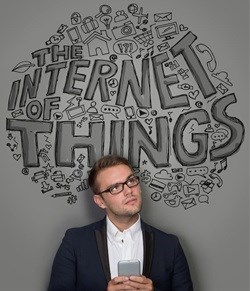
Top stories


Marketing & MediaThe Odd Number named Financial Mail AdFocus Mid-Sized Agency of the Year
The Odd Number 2 hours




More news





















McKinsey projects that IoT will be a $6.2-trillion industry by 2025. The public and private sectors have started investing heavily in IoT to capitalise on its uses and (projected) exponential growth: software company SAP plans to invest $2.2-billion in IoT by 2020, while India has announced a package of $2-trillion to connect 100 cities around the country.
The uses of IoT – from smart autonomous cars that self-direct to less congested roadways during peak traffic hours, to home automation, to smart farming, and millions more – all have one thing in common: they are designed to make the world a more efficient place to live and work in. This efficiency is driven by access to quality data that did not exist before and matching this to data analysis and automation to deliver insights and solutions faster than has been possible before.
Pundits are quick to point to IoT-enabled clothing that can track the wearer's fitness and health and inform nearby connected devices when it's time to replace the piece of clothing (in an ideal world, per the pundits, the piece of clothing in question would interact with a connected device to order a replacement garment without the wearer even being aware of the need therefore in the first place). The combination of IoT and automation (enabled by AI/machine learning) is humanity’s surest step yet to the world imagined by the great science fiction writers of the past century.
Amid all this excitement and hype, we are at risk of missing one critical component to the success of IoT – and any other technology: the human element.
Whatever the inherent potential of a new technology, its success ultimately resides in if and how people adopt it. For IoT to live up to its promise of efficiency, safety and convenience, human beings – not processors and data – should be the focal point.
I believe there are three key elements that will drive IoT as the catalyst of the Fourth Industrial Revolution, namely:
1. Using smart connected devices to enable people to make smarter decisions: Core to the premise of smart cities, smart cars, smart manufacturing and all manner of smart devices is that you can only manage what you can measure. Millions – billions – of connected devices generating real-time data give decision-makers unprecedented amounts of accurate information that enables them to identify and act on the best possible option at any given time.
While the devices that generate the data are invaluable, it is ultimately the human ability to determine context and extract value from the data that will realise the true benefits of the technology.
2. Providing real-time information to people and business to improve the customer experience: User experience (UX) is a concept nearly as hyped as IoT. The core premise is to make technology interfaces and processes as intuitive as possible to improve the experience of using software, products or services.
IoT adds a deeper layer to this – instead of waiting for the user to interact in a certain way and accommodating their preferred way of interaction through clever design, IoT can proactively introduce information or guidance to users before they are consciously aware that they need or want something. For example, a small-scale farmer can deploy sensors to his crops that feed critical information to a mobile app, advising him of optimal watering of his crops to produce a bigger yield while limiting water consumption.
3. Complete dedication to solving human problems: In essence, all technology needs to be useful, accessible and available for it to become part of mainstream consumer and business culture. IoT is no different. Through a combination of data analysis and automation, IoT should be able to remove day-to-day frustrations such as traffic congestion or queueing at the bank. It however needs to be consciously designed for this purpose, or IoT will remain an unfulfilled promise to people and businesses alike.
Without a focus on the human element, IoT is simply a solution looking for a problem. As with all truly transformative technologies, its success will ultimately depend on how well it adapts to the needs of a rapidly evolving and developing human population. All the fundamental elements are there to make IoT the technology that shapes this generation (and many generations to come). If we remember that, in the end, it is ourselves – not the technology we invent – that needs to be the priority.